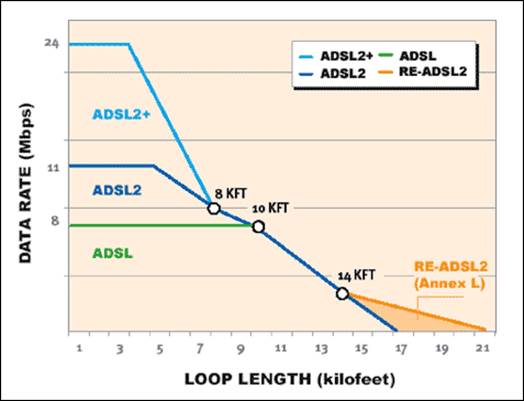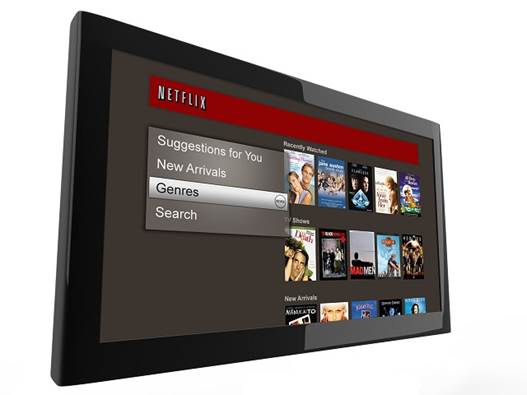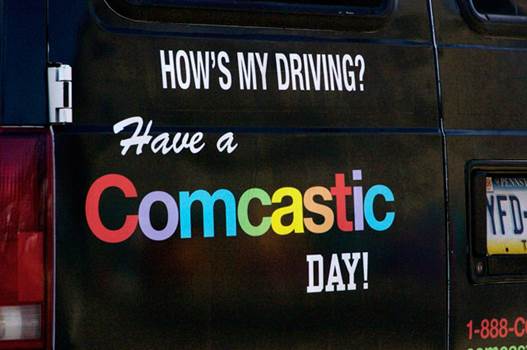Broadband of the future
To get a read on a broadband’ s future in
the United States, we talked to a couple folks well versed on the subject:
Patrick Moorhead, founder and principal analysts at Moor Insight and Strategy,
and Dane Jasper, CEO of Sonic.net. When asked about which of the broadband
technologies available in the United States will be the most pervasive moving
forward, Moorhead said, “Wireless broadband will be the most pervasive in the
future, given that it touches so many people in so many places. Wi-Fi wireless
in particular will be expanded significantly as service providers attempt to
string networks together to take some of the traffic off of congested 3G, 4G,
and LTE networks. “He continued, “Cable is the winner in terms of the price to speed
equation, in that most of the investment is a sunk cost. Fiber, as in Google
Fiber, is the fastest, but also the costliest to install. Satellite will
continue to play a niche toke, serving hard-to-reach and rural areas. Its
asymmetry and line of site requirements outweigh any kind of downlink speed
advantage”. Dane Jasper mostly agreed, stating, “Domestically, you will see a
continued slow march of the incumbent duopoly; cable will gradually upgrade to
higher DOCSIC versions as they become available and feasible, and will split
nodes in the meanwhile to avoid congestion at least to the point of avoiding
customer churn. Meanwhile, Telcos will push fiber closer to the home or, in the
case of Verizon, all of the way while rolling out faster xDSL technologies:
ADSL2+ and VDSL2 today, with bonding and then vectoring”. Jasper added,
“Wireless is also a factor to consider. With LTE’s very high speed
capabilities, and consumers’ interest in tablets and other portable devices,
these services are a potential alternative to wireless products.”

All
of the way while rolling out faster xDSL technologies: ADSL2+ and VDSL2 today,
with bonding and then vectoring
We also asked what they thought pervasive,
ultra-high-speed broadband could mean for consumers, and Moorhead proclaimed,
“New usage models will emerge with the advent of fast, reliable broadband. With
faster broadband, most of our computing can be done in the cloud, meaning more
consistent, reliable, and less expensive experiences. Low-priced displays able
to run any app will be all over the house, so literally, every room will enable
access to every app and piece of content, anytime”. Sounds good to us, though
we don’t want to downplay the need for fast local storage, as well.
As for why the United States tends to lag
behind many other developed nations and what we could do to improve the
situation, Dane Jasper put most of the blame on misguided government policies
and regulation. He said, “Reversing the course selection of a multi-modal
competitive model, which the Republican FCC charted for us in the early 2000s,
is the quickest way to resolve the domestic broadband issue. Europe and Asia
followed our regulatory course from the 1996 Telecom Act, ad stuck with it
while in the United States we faltered, fostering instead a duopoly. While
incumbent cable and Telcos have made substantial upgrade DOCSIS 3.0, FiOS,
U-verse - we continue to overpay for under-delivery of speed, generally with
consumption caps”. Patrick Moorhead’s view was somewhat different. Moorhead
said, “Countries leapfrog each other as it relates to broadband. The United
States was viewed as the mobile laggard during the EDGE days, but now has one
of the top spots in LTE. Countries like Korea and Japan will continue to
dominate with speeds, unless the US government would subsidize fiber rollout.
Given the US budget challenges, I don’t see that happening, meaning the United
States does not gain leadership footing in broadband”.
The need for speed
What is super high speed Internet
good for, anyway?
In many circumstance, the benefits of an
ultra-fast broadband connection may not be immediately apartment. There are
other factors besides peak bandwidth that ultimately affect a user’s experience
online and if you’re not using the bandwidth you already have available,
upgrading to a faster plan isn’t going to make much difference. However, as our
needs for more bandwidth increase, the benefits of some of the more advanced
broadband technologies become clear.
As we start saving more data in the cloud,
streaming more HD content, and increasing the number of connected devices in
our homes, our bandwidth needs grow. Just a few years ago, having one or two
PCs connected in a home was typical. Today, though, it’s not uncommon to find a
dozen or more connected devices, when your account for smart appliances and
televisions, mobile devices, game consoles, desktop systems, and laptops.
How much bandwidth you’ll require will
obviously vary based on the usage habits of those in your household, but we can
give you some rough guidelines and expectations. For example, let’s say you’ve
got three users in your home. One is playing a game online, while the other two
are streaming HD movies or television from a service like Netflix. For their
highest quality streams, Netflix recommends a 5Mbps connection; a typical
stream can consume about 2.3GB an hour. The gamer will use a minimal amount of
bandwidth, but the two users streaming video will likely saturate a 10Mbps
connection.

Netflix
Goes Super with New 'Super HD' Streaming Option
The speed differences between mainstream
and high-end broadband plans are not trivial and neither is the cost. Actual
differences will vary from provider to provider, but we’ll use Verizon FiOS as
an example. A basic plan that offers 15Mbos down and 5Mbps up will run about
$70 a month. Its flagship plan offers 300Mbps down and 65Mbos up, 20x and 13x
increases in bandwidth, respectively, for $209 a month. If you can use that
kind of bandwidth, the cost per megabit is much better with the high-end plan.
To give an example of how those bandwidth ratings affect download speed, the
15Mbps plan can download a 5GB file on about 44 minutes. The 300Mbps plan can
do it in 2.2 minutes.
Bandwidth caps
In an attempt to curb massive bandwidth
consumption, some providers especially wireless providers have implemented
bandwidth caps that kick in when consumption ticks past a certain level. For
wireless providers, that number is usually in the 2GB - 4GB per month range,
while Wireline providers like Comcast are in the 300GB per month range.

For
wireless providers, that number is usually in the 2GB - 4GB per month range,
while Wireline providers like Comcast are in the 300GB per month range.
Some would argue that these caps are simply
a tool to gouge consumers, while others claim it’s a means to ease network
congestion. Sonic.net CEO Dane Jasper said this when asked about bandwidth
caps, “I don’t see caps as being related to network capacity concerns. To put
it simply, the heaviest user, when caped, will still use their service during
peak/prime time, and network capacity must be built to accommodate the peak
load. The sustained use that the heavy users would make is spread around the
clock, and doesn’t have any substantial impact on capacity planning”. Whatever
the case, if bandwidth caps become the norm, consumers could be in for
significant cost increases in the future as our bandwidth needs increase.